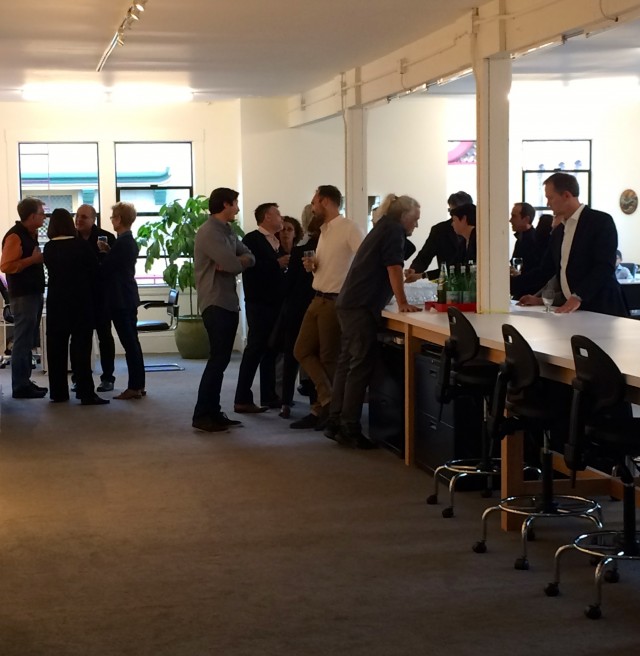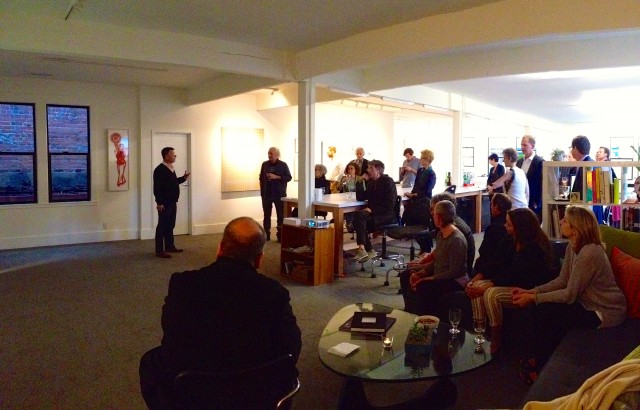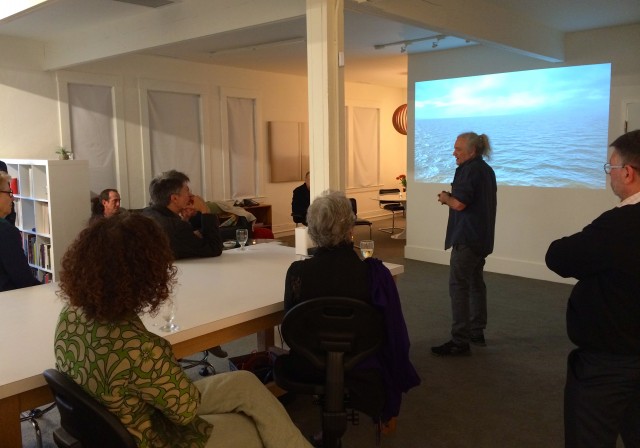Last night Artsource and James Harris Gallery had the pleasure of co-hosting ‘An Evening with Gary Hill’. This artist talk begins Artsource’s new art education series, which coincides with our 20th anniversary and the opening of our new space.
Artists, curators, architects and collectors all gathered to view Isolation Tank, listen to the artist discuss the concept behind the piece and discuss Hill’s greater body of work and the role of ‘media art’ in the art world. The lively discussion and varied perspectives at this event were an example of how we promote dialogue and serve as the bridge between different communities of people around the subject of art and its meaning in our daily lives.
Gary Hill (b. 1951, Santa Monica, CA) works with a wide range of media including sculpture, video, performance, sound and installation. Although he is often heralded as a foundational ‘new media’ artist integral to the creation of that medium, he is hesitant to identify himself as a ‘new media’ or a ‘video’ artist.
Isolation Tank depicts a lone surfboard on the open water, disturbed by a rogue wave which capsizes the board. The work is completely computer generated but feels realistic, playing with perspective and leaving the viewer questioning the origins of the board and the whereabouts of its owner. The board is adorned with a decal of Mahakala, a protector of Dharma in Tibetan Buddhism, which morphs into a visage of the artist’s face. Originally this work was shown as part of a series of five videos entitled ‘of surf, death, tropes and tableaux: The Psychedelic Gedankenexperiment’. View the piece in its entirely here.
This series of work was developed in response to Hill’s experience with psychotropic drugs, specifically Lysergic acid diethylamide (LSD). For the artist, LSD projects a feeling of interconnectivity onto the world, allowing him to see relationships and attachments more clearly.
While discussing this work at Artsource, Hill noted that it is meant to mirror a moment where “the rug is pulled out from your mind. [The viewer contemplates] what you think you are, what you think you were and what you think you will be.”


